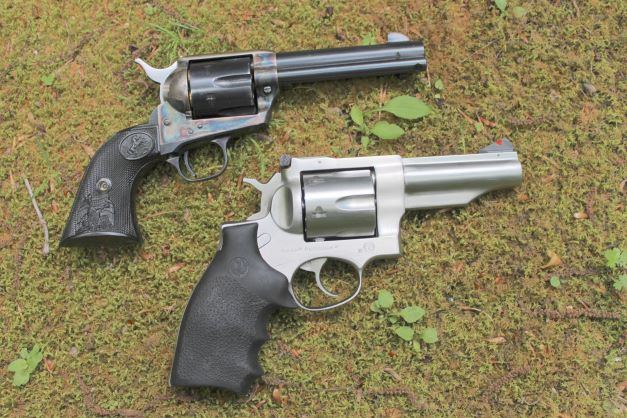
By Jim Dickson | Contributing Writer
The debate of which is best, single action or double action, has continued for as long as revolvers have existed.
Sam Colt made his first revolvers as single actions despite the fact that double action pepperbox pistols were around before his first guns. The reason he went with single actions was because nobody ever seemed able to hit anything with the double action pepperboxes.
Mark Twain described a man shooting a pepperbox from a stagecoach during the California Gold Rush. “He aimed for the oak tree but fetched the nigh mule!”
The problem is that the heavy, long trigger pull of the double action is most disruptive to your sight picture and requires skill born of many rounds fired in practice to master. Most people just won’t spend the time or the money on ammunition to do that. No one disputes that the light, short single action trigger pull is easier to control for precise shooting.
Today the double action revolver that can also be fired single action seems to be the last word, but not so fast. The ergonomics of a double action revolver are far from optimum for single action shooting. Most single actions today are copies of the Model 1873 Colt Single Action Army and its grip is the same as the Model 1851 Colt Navy cap-and-ball revolver. Colt got it right back then and there simply was no improving on that grip for a fast handling, quick pointing single action. It is perfectly shaped to be rocked back in the hand as the thumb is laid crossways on the hammer for cocking.
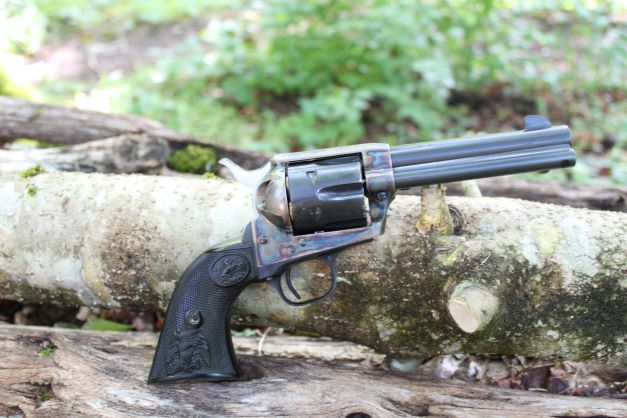
One point lost in time for most shooters is the fact that this gun must be gripped as high as possible for accurate aiming. Some shooters have felt the need to take a file and then a stone directly on the sharp edge of the hammer spur because it was digging into their hand. It would have been better if Colt had left that spur sticking straight up like it was on their earlier percussion revolvers. Not only would that have forced people to cock the revolver correctly with the thumb across the hammer, it would have prevented the hammer spur from jabbing them in the side as does will sooner or later.
Now let’s look at the double action revolver being fired single action. The hammer spur is not really designed for cross-thumb cocking and most people will cock the double-action with the thumb directly on the hammer spur, where it is more prone to slip. The grips are not designed to roll back in your hand as you cock a double action, as they are designed instead to give the best control while using the long double action trigger.
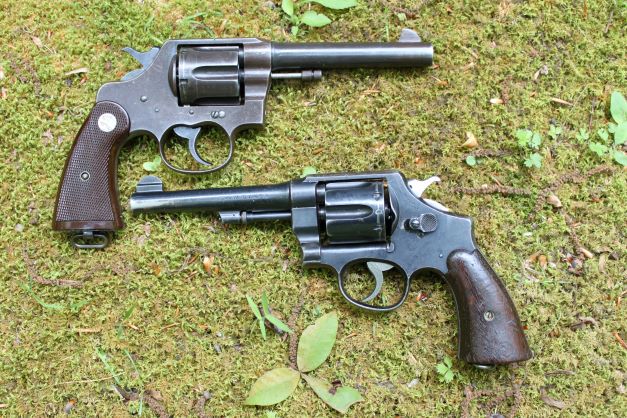
Fired as a single action it is dramatically inferior ergonomically to a true single action. After all, its reason for being is to fire double action which is what it is primarily designed for. The problem is that so many people persist in firing a double action revolver as a single action instead of learning to shoot double action.
Personally, I shoot my double action revolvers exclusively as double actions, as that is what they were designed for and it is what they do best. If I want to shoot single action, I get my Colt SAA. It was designed for that and is far more efficient at it than a double action revolver. Make up your mind which way you want to shoot and choose a gun accordingly.
Which is easiest to hit with? The single action. Right? Not so fast. For the non-shooter homeowner faced with a burglar in the wee hours of the morning the double action revolver is easiest as all he has to do is aim and pull the trigger. He may forget to cock a single action if he is not a shooter as his mind is fogged from being aroused from a deep sleep and often filled with fear or at least excitement. Of course for most folks nothing compares to the ease of hitting the target with a single action but that assumes their being a shooter who will practice at least some.
For a practiced shooter the only thing that can match the ease of hitting the target with a properly gripped Colt Single Action is the Luger pistol. Among revolvers the Colt Single Action is unmatched for instinct shooting and this is critical when you are shooting in the dark. After dark is the most dangerous time for threats and you can’t see your sights then so you had better learn how to shoot accurately without using your sights. You may find that instinct shooting is far more precise and accurate than using the sights on a gun.
The rate of fire is the same for both the single and the double action. It’s reloading where the double action leaves the traditional single action far behind. Still, as long as you don’t have more than five adversaries to deal with at a time, the .45 single action built on the original Cold design will be more than sufficient. (You always carry the Model 1873 with the hammer down over an empty chamber because the lockwork is unchanged since the first 1836 Colt Patterson. It lacks a rebounding hammer or a hammer block safety.)
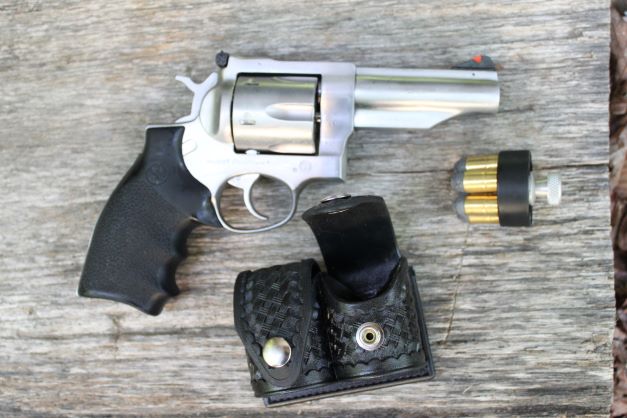
Which is best for law enforcement? Modern law enforcement agencies have transitioned to semiautomatic pistols. Revolvers of any kind have gone by the wayside.
At this point it should be noted that it is possible to fire a double action revolver as accurately double action as you can fire it as a single action. It just takes more practice. There are two ways to do this. You can pull the trigger straight through doing instinct shooting or you can pull it almost all the way then adjust your sight picture before letting off the shot. Both methods work if you will just take the time to master them.
A key factor is a good double action trigger pull. My Ruger Redhawk in .45 Colt has a good trigger pull conducive to accurate shooting. My Model 1917 Colt and S&W revolvers make it harder solely because of the trigger pull. I have seen Colt New Service revolvers that had triggers as good as the Redhawk but regrettably, mine isn’t one of them.
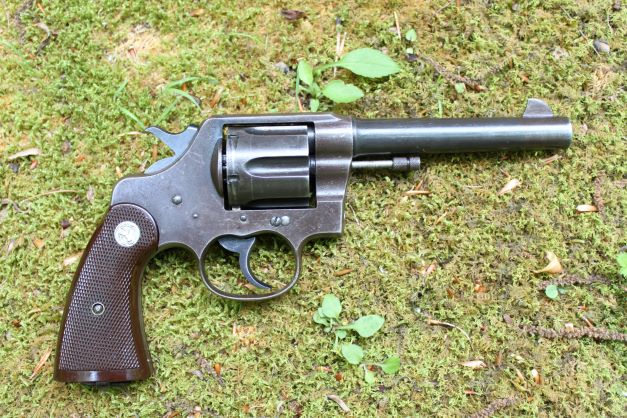
For defense and hunting I prefer the .45 Colt round to all others as it has proven capable of killing everything in North America efficiently yet it does not recoil so much that you cannot do rapid fire with it. Its decibel level is much lower than the magnums so you have less chance of permanent hearing loss when you have to take a quick shot with no time to put on hearing protection.
This cartridge’s design specification demanded that it put down a cavalry horse at 100 yards and this requirement was met easily. Back when the army was dedicated to exterminating the buffalo herds, the cavalry often rode alongside the buffalo and killed them with their Colt .45’s. The round has all the power it needs for this continent’s big game hunting. It also does not ruin much meat when used on squirrels and rabbits.
My pick for the best choice of a single action and a double action is the 4 ¾-inch barrel Colt Single Action Army and the stainless steel 4-inch barrel Ruger Redhawk. These are both currently available and have the best handling qualities of all the various barrel lengths. You can take game with either of these at all normal hunting ranges if you do your part. While the guns will comfortably reach out hundreds of yards it is worth noting that despite the overestimates of range by hunters, most deer are actually killed within 100 yards. That is certainly no great challenge for a competent revolver shooter using either handgun.
So what do experts with both single and double action revolvers prefer? The late Skeeter Skelton went on record as saying he couldn’t make up his mind between the two. The late Elmer Keith blurted out his true feelings during a conversation we once had. I had just told Elmer that I had acquired a new salesman’s sample Colt Single Action Army .45 with a 4 ¾-inch barrel. “That’s the finest pistol ever made!” he exclaimed. As for me, I wind up carrying that Colt Single Action a lot more than the double actions on my farm. It’s just faster and surer hitting under bad conditions.



